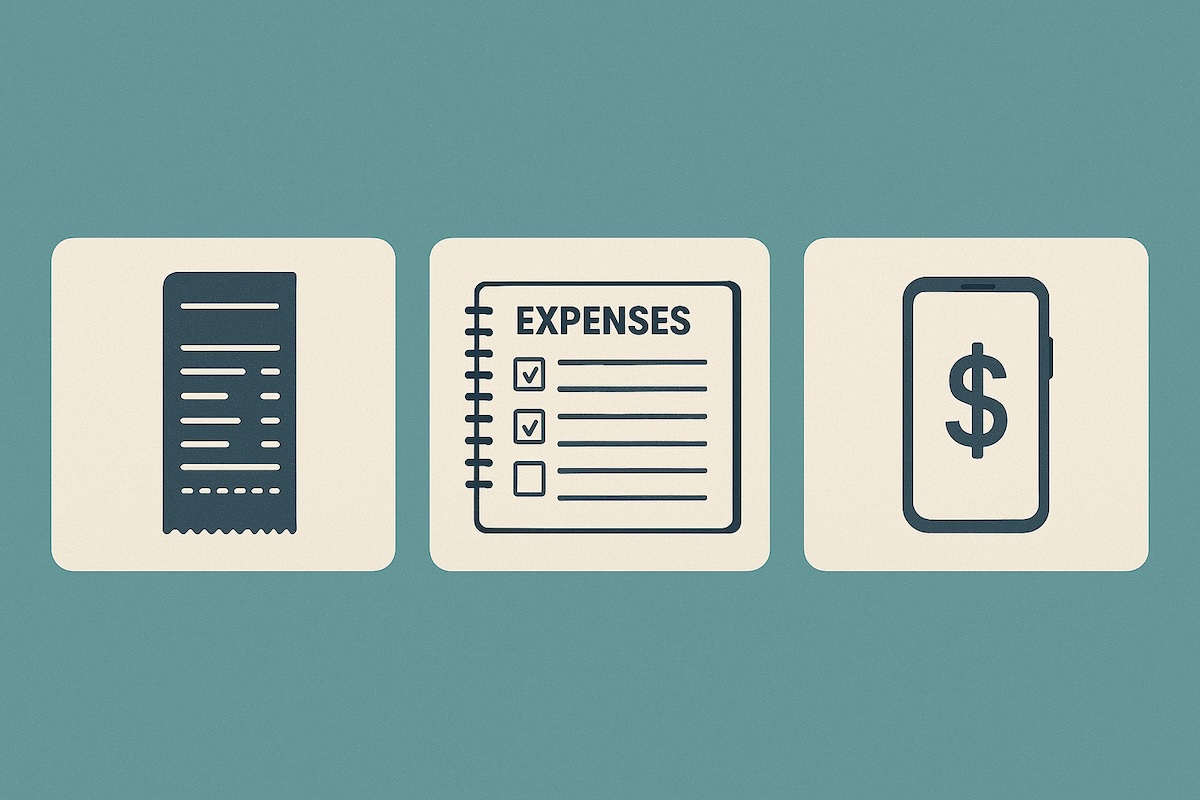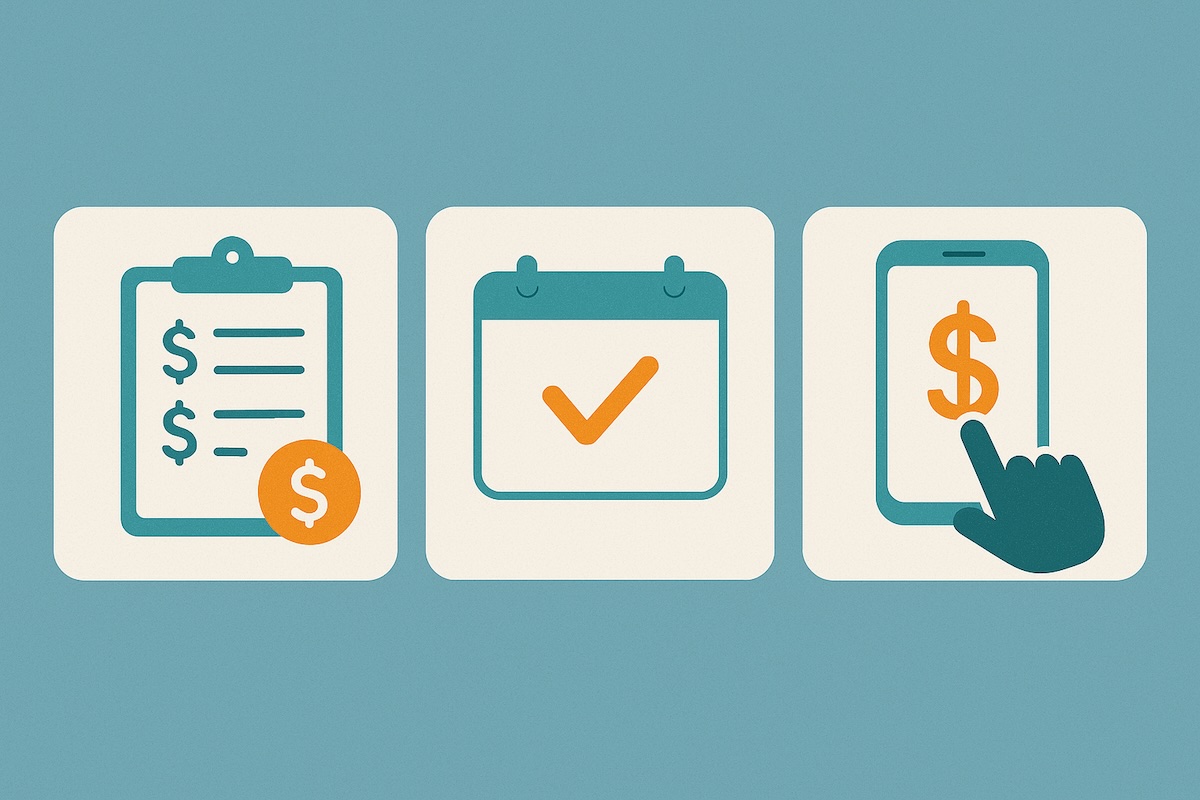How to Track Home Expenses Efficiently
Managing household finances is often one of the most challenging aspects of running a home. From utility bills and mortgage payments to groceries and home maintenance costs, keeping track of where your money goes is essential for financial health. Yet, many homeowners struggle to maintain consistent expense tracking systems.
In this guide, we'll explore practical, sustainable methods to track your home expenses efficiently, helping you gain clarity and control over your household budget.
Why Tracking Home Expenses Matters
Before diving into the "how," let's address the "why." Tracking your home expenses provides several key benefits:
- Financial awareness: Understanding exactly where your money goes
- Budget optimization: Identifying areas where you can cut costs
- Financial planning: Making informed decisions about future purchases and investments
- Bill management: Avoiding late fees and ensuring timely payments
- Tax preparation: Maintaining records of deductible expenses
- Financial goals: Working effectively toward savings targets
Without a clear system to track these expenses, many households find themselves wondering where their money went at the end of each month.
Choose Your Tracking Method

The first step in efficient expense tracking is selecting a method that works for your lifestyle and preferences. Here are the most effective approaches:
1. Digital Apps and Software
Digital tracking tools offer automation and insights that paper-based systems can't match. Consider these options:
- Dedicated expense tracking apps: Apps like Mint, YNAB (You Need A Budget), or Nestly provide specialized features for categorizing household expenses
- Spreadsheet templates: Google Sheets or Microsoft Excel offer customizable expense tracking templates
- Banking apps: Many banks now offer built-in categorization and spending analysis
The advantage of digital solutions is the ability to sync across devices, automatically categorize expenses, and generate insightful reports on your spending habits.
2. Traditional Paper Systems
Despite digital advances, some homeowners still prefer physical tracking methods:
- Budget binders: Physical folders with sections for different expense categories
- Envelope system: Allocating cash to different expense categories at the beginning of each month
- Expense journals: Dedicated notebooks for recording daily spending
Paper systems work best for those who prefer tactile methods and the act of physically writing down expenses.
3. Hybrid Approaches
Many successful household budget managers combine digital and traditional methods:
- Using apps for automatic tracking of electronic payments while maintaining a paper system for cash expenses
- Keeping digital records but printing monthly reports for review sessions
- Using a paper system for daily tracking but transferring data to digital formats for long-term analysis
Creating Categories That Make Sense
Regardless of your tracking method, organizing expenses into logical categories is crucial for effective analysis. Here are recommended categories for most households:
- Housing: Mortgage/rent, property taxes, HOA fees, insurance
- Utilities: Electricity, water, gas, internet, phone
- Food: Groceries, dining out (these should be separate!)
- Transportation: Car payments, gas, insurance, maintenance, public transit
- Home maintenance: Regular upkeep, repairs, improvements
- Health: Insurance premiums, medications, doctor visits
- Personal: Clothing, haircuts, personal care products
- Entertainment: Streaming services, hobbies, outings
- Debt payments: Credit cards, student loans, personal loans
- Savings: Emergency fund, retirement, specific goals
Customize these categories based on your specific household needs and spending patterns.
Implementing Your Tracking System

Once you've chosen a method and established categories, it's time to implement your system with these best practices:
Set a Regular Schedule
Consistency is key to successful expense tracking:
- Daily: Spend 5 minutes recording expenses or saving receipts
- Weekly: Set aside 15-30 minutes to update and categorize all expenses
- Monthly: Schedule 1 hour for reviewing, analyzing, and adjusting your budget
Automate Where Possible
Even if you prefer manual tracking, take advantage of automation:
- Set up automatic bill payments to avoid missed deadlines
- Use receipt-scanning features in apps to avoid manual entry
- Link financial accounts to your tracking app for automatic imports
- Use text or email alerts for bill due dates
Include Everyone in the Household
Expense tracking works best when everyone participates:
- Hold regular family meetings about finances
- Make tracking accessible to all adult household members
- Create simple systems for family members to report expenses
- Celebrate financial wins together to maintain motivation
Advanced Tracking Strategies
Once you've established basic tracking habits, consider these advanced strategies:
1. Zero-Based Budgeting
With zero-based budgeting, you allocate every dollar of income to a specific category, with no money left "unassigned." This approach ensures complete awareness of where your money is going and prevents mindless spending.
2. Separate Fixed and Variable Expenses
Distinguish between expenses that remain consistent month-to-month (mortgage, car payment) and those that fluctuate (groceries, utilities). This separation helps identify where you have more control over spending.
3. Track by Paycheck Cycles
Instead of thinking in monthly terms, some households find it more effective to budget based on paycheck cycles, allocating specific bills and expenses to specific paychecks throughout the month.
4. Use the 50/30/20 Rule
This simplified budgeting approach suggests allocating:
- 50% of income to needs (housing, food, utilities)
- 30% to wants (entertainment, dining out)
- 20% to savings and debt repayment
While tracking, tag expenses according to these categories to ensure you're maintaining healthy proportions.
Using Technology to Streamline Expense Tracking
Today's digital tools offer unprecedented capabilities for home expense management:
AI-Powered Receipt Scanning
Apps like Nestly use advanced AI to scan receipts and automatically categorize purchases, saving hours of manual data entry. Simply take a photo of your receipt, and the app does the rest.
Smart Categorization and Pattern Recognition
Modern expense tracking apps learn from your spending habits and begin to recognize patterns, automatically categorizing recurring expenses and identifying unusual spending.
Real-Time Budget Alerts
Set up notifications when you're approaching category limits, helping you stay on track before you overspend.
Expense Forecasting
Advanced apps can analyze your spending history to predict future expenses, helping you prepare for seasonal variations or irregular costs.
Overcoming Common Tracking Challenges
Even with the best intentions, expense tracking can present challenges. Here's how to overcome the most common ones:
Inconsistency
Solution: Start small with just tracking major categories, then expand. Use visual reminders or calendar alerts to maintain consistency.
Shared Expenses
Solution: For households with multiple spenders, use shared apps or accounts, establish clear communication protocols, or designate one person as the primary tracker.
Cash Expenses
Solution: Keep a small notebook or use a dedicated app entry for cash purchases, or allocate a specific "cash spending" budget that doesn't require detailed tracking.
Motivation Loss
Solution: Focus on the goals your tracking enables rather than the process itself. Celebrate milestones and set up visual representations of progress toward financial goals.
Analyzing Your Expense Data
Tracking is only valuable if you regularly review and analyze the data you collect:
Monthly Reviews
Set aside time each month to:
- Compare actual spending to budgeted amounts
- Identify categories where you consistently over or under-spend
- Look for unexpected expense patterns
- Adjust future budgets based on your findings
Quarterly Deep Dives
Every three months, conduct a more thorough analysis:
- Look for seasonal patterns in expenses
- Identify potential areas for cost reduction
- Evaluate progress toward financial goals
- Compare current spending to previous quarters
Annual Financial Planning
Use your year of tracking data to inform next year's financial plan:
- Set realistic budgets based on actual spending history
- Plan for major expenses based on patterns from the previous year
- Establish new savings goals informed by your spending capacity
- Identify long-term trends in household expenses
Conclusion: Building Sustainable Habits
Efficient expense tracking isn't about monitoring every penny—it's about creating sustainable financial habits that bring clarity and control to your household finances. Start with a system that feels manageable, use technology to reduce friction, and focus on consistency rather than perfection.
Remember that the ultimate goal isn't just tracking expenses—it's making informed decisions that align your spending with your values and goals. With the right system in place, you'll not only know where your money goes but also feel empowered to direct it with purpose.
Nestly's expense tracking features integrate seamlessly with other aspects of home management, allowing you to connect your financial data with inventory management and maintenance schedules. This holistic approach provides unprecedented visibility into the true cost of homeownership and helps you make smarter decisions about home investments.
Ready to take control of your household expenses? Download Nestly today and discover how our AI-powered expense tracking can transform your approach to home finances.
Download Nestly Now